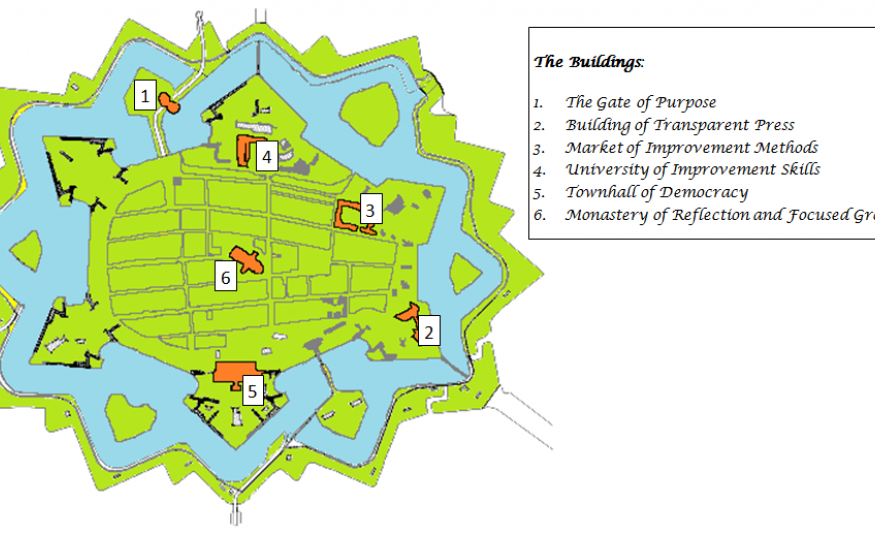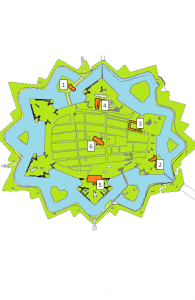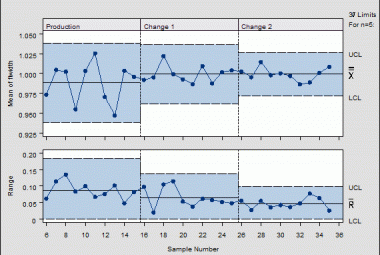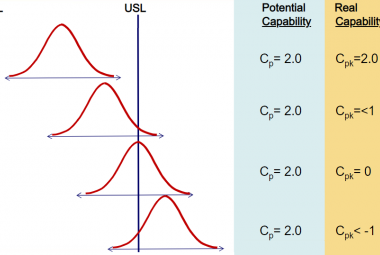The second building in the Fortress of Change is the Postoffice. Managing communication flows within the organization is one of the most important ways to align all employees with the company goals. Communication can go one way, where departments only inform each other on ongoing matters (Theory-E), or they can go both ways, which include the control and responsibility meetings discussing the aligned KPI (Hoshin Kanri) at the communication cells (Theory-O)
CONTROL AND RESPONSIBILITY (C/R) meeting based on the aligned KPI’s (see: The Gate of Purpose – Hoshin Kanri) should be structured according to the following guidelines:
The KPI tree should be pyramid shaped, in which one KPI at the top translates into 10 Behavioral Indicators (BI) at the bottom of the pyramid. This seems logical in theory, but in practice, management usually measures and discusses many more KPI than the operators with their shift-leader.
The frequency of these C/R meetings are based on the location in the pyramid. Since behavioral indicators describe human behavior, they should be checked and discussed a few times a day. In a production environment, this could translate into a shift-leader checking operator behavior 3 times each shift. Control indicators can be discussed ones a day (shift-leader discusses his performance with the production leader) and Performance Indicators ones a week (Production leader discusses performance with operations manager).
Ideally, the C/R meetings include only two levels of hierarchy, where the one link between a BI and a SI are discussed.
The employee presents his results to his manager. In a team, each of the members presents his personal performance to built commitment.
Lastly, minimize shared responsibility when possible. Shared responsibility is no responsibility. Think about how hard it is to distribute accountability in a production environment with multiple shifts where each team points to other teams for problems, blame or cause and therefore fail to take responsibility for performance results.
COMMUNICATION TOOLS which can be used to manage communication can be divided in two types, based on the nature of the change, Theory-E and Theory-O changes. Lean literature mainly focuses on Theory-O changes, which are characterized by both bottom-up as well as top-down communications, where everyone can take part in the creating the changes (Beer en Nohria, 2000). These communications are used in the softer systems of the McKinsey 7S model, Skills, Staff, Style and Shared Values. The tool to use is thecommunication cell (Suzaki, 1993) to communicate within a team, between teams and departments. The communications cell helps visualizing performance to facilitate the C/R meeting. Employees can share what they find important and what kind of problems they encounter for which they need support.
Another example of a Theory-O communication tool is a Gallery of success stories to celebrate successes (Liker, 1994) and to show people that changes are effective (Kotter, 1995).
Te second type of communication is around Theory-E changes, which are described by top-down changes which require one-way communication (Beer & Noria, 2000). Topics which are suitable for these kind of communications are changes is strategy, systems and structure, the three ‘hard’ s-es of McKinsey’s 7S model.
Examples of tools to communicate E-Type changes are Newsletters, Information boards and a comany magazine.
This is article 3 in the series ‘The Fortress of Change‘
Continue to:












